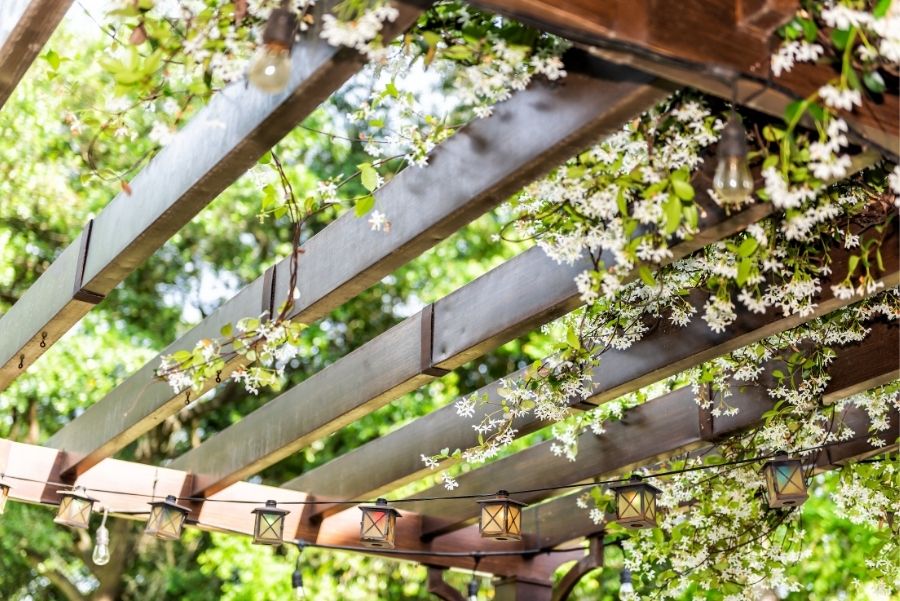Pergola is an exterior structure that offers sun protection in your backyard. It beautifies the landscape and provides an entertainment sanctuary for outdoor activities but is it worth installing/owning the system?
Let’s make a comparison.
Pros
- Pergola is inexpensive in comparison to Gazebo and Pavilion. The budget for the installation of Pergola depends on the design, material and labour cost. You may appoint a local landscape professional to design and custom build it, or you may purchase a kit from any well-known manufacturers or stores.
The average price for installation of Pergola based on material is as follows:
Material Type Price (US$)
Pressure Treated Wood 3,200 – 30,600
Red Cedar 4,300 – 35,500
Vinyl 5,700 – 44,000
*Note: For elaborate structure would require a permit, and the cost differs.
Following Pergola Newcastle advice, other considerations to add to the budget are the height, size of beams and another concrete roof. Labour cost varies by state or region. The national average price for 10 x 10 sq ft or 10 x 12 sq ft pergola is US$3,600. The typical type of pergola range from US$1,970 to US$5,200 and high-end of US$900 under a professional digital marketplace that connects homeowner and local professional for home improvement.
The average price for installation of a Gazebo based on material is as follows:
Material Type Price (US$)
Pressure Treated Wood 3,200 – 30,600
Red Cedar 4,300 – 35,500
Vinyl 5,700 – 44,000
For installation of Pavilion would price between US$19,200 for pressure treated wood – US$27,300 for steel type of material.
For budget-friendly Pergola and DIY enthusiasts, the average cost is approximately US$3,500. The Pergola from a Kit for 10 X 10 sq ft cost about US$400 – US800, which includes a retractable cover. Cedar material type would cost approximately US$1,200 for a similar size.
A basic garden pergola measuring 8 X 16 sq ft of Pressure-treated wood would cost US$570 excluding tax, delivery and other miscellaneous charges. Additionally, installing the Pergola requires hole digging for the post holes. Gas rental for the digging is needed, plus an application for a building permit before the DIY commencement.
Pergola is usually made of several types of durable wood beside vinyl and fibreglass. For material made of Ipe, which can withstand the weather for built-up on the coast, repel insects and termites for the cedar type of material whilst pressure-treated wood is known for its durability insect-repellant.
- It creates an outdoor living space for entertainment and hospitality. It also encourages flora and fauna and offers tranquillity and an oasis in the backyard. The trailing and growing plants around the beams create a romantic environment. An extension of the living space and provides a cozy spot for relaxation.
Cons
Owning a pergola requires maintenance. The maintenance depends on the type of material of the structure, for, e.g. constant review of the system for signs of mildew when living in the coastal area where the air is moist. The mildew will destroy the structure is ignored. Wood needs regular re-paint or scrub off for any splinter to avoid injury.
Also, the wood may change its natural colour. Preservation of the wood by regular application of wood stain and sealant is necessary. Additionally, the trailing plants surrounding the beams need to be trimmed regularly.
It’s not uncommon for termite infestation for wood structures, albeit cedar and pressure-treated wood are known for their feature as insect-repellent. Regular treatment is necessary to prevent such infestation.
Conclusion
The option of material for Pergola must take into considerations the maintenance cost. Overall, it is worth installing a pergola as it creates a unique personality to the landscape—a place to unwind and entertainment and complement the outdoor living space. Since ancient Rome and Egypt, it has been depicted in the Nile Mosaic Palestrina, Italy. The form survives and is prevalent till today.
